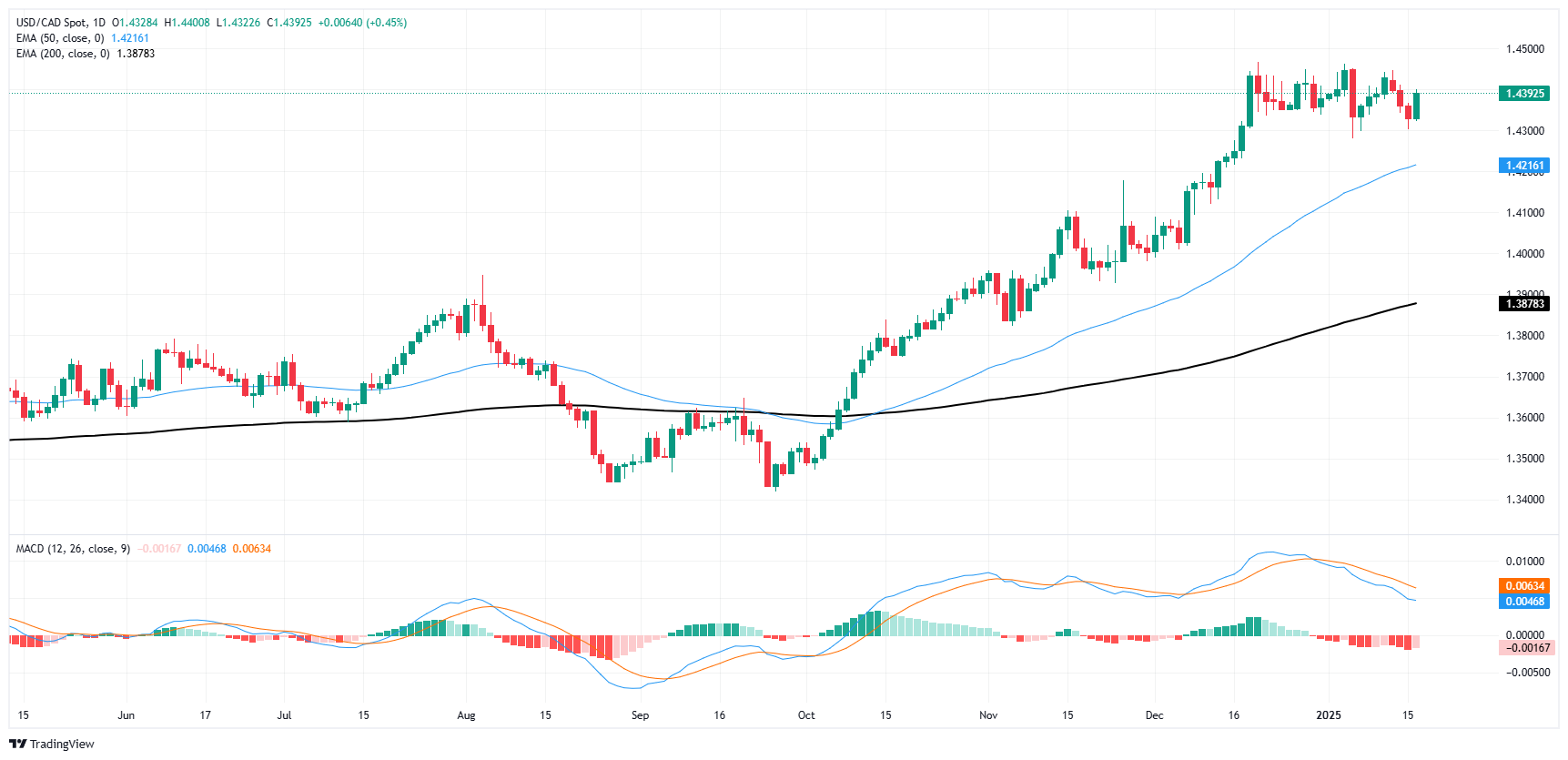Canadian Dollar runs out of gas, falls back once more
- The Canadian Dollar backslid around 0.4% against the Greenback on Thursday.
- A lack of meaningful data from Canada leaves the Loonie in the lurch.
- USD/CAD continues to consolidate as markets await shifts in rate stances.
The Canadian Dollar fell back around four-tenths of one percent on Thursday, dipping against the Greenback and falling back into familiar congestion territory near multi-year lows. Canadian data remains impactful as Loonie traders await meaningful releases, and wobbly US data on Thursday kept market flows with one foot in the US Dollar.
Canada saw slightly fewer Housing Starts in December, and US Retail Sales also eased, causing US Business Inventories to rise slightly. US Initial Jobless Claims also came in slightly higher than expected, but still well within recent norms.
Daily digest market movers: CAD falls back into congestion as data fails to spark moves
- The Canadian Dollar lost 0.4% against the Greenback, pushing USD/CAD back toward the 1.4400 handle.
- Crude Oil prices fell on Thursday, driven down as Houthis are expected to suspend attacks on shipping containers soon.
- Declines in barrel prices could be pushing the Loonie lower as CAD markets struggle to find headlines to chew on.
- The trading week will end with a whimper rather than a bang, with no impactful American session data on the economic docket for the remainder of the week.
- Canadian Consumer Price Index (CPI) inflation figures loom ahead next week.
Canadian Dollar price forecast
USD/CAD continues to churn around the 1.4400 handle, as the Loonie remains unable to gather enough momentum and break out of a rough consolidation zone that has plagued the pair for the better part of a month. Excluding the pandemic era of global Greenback dominance, USD/CAD is trading into its highest bids since 2016.
USD/CAD daily chart
Canadian Dollar FAQs
The key factors driving the Canadian Dollar (CAD) are the level of interest rates set by the Bank of Canada (BoC), the price of Oil, Canada’s largest export, the health of its economy, inflation and the Trade Balance, which is the difference between the value of Canada’s exports versus its imports. Other factors include market sentiment – whether investors are taking on more risky assets (risk-on) or seeking safe-havens (risk-off) – with risk-on being CAD-positive. As its largest trading partner, the health of the US economy is also a key factor influencing the Canadian Dollar.
The Bank of Canada (BoC) has a significant influence on the Canadian Dollar by setting the level of interest rates that banks can lend to one another. This influences the level of interest rates for everyone. The main goal of the BoC is to maintain inflation at 1-3% by adjusting interest rates up or down. Relatively higher interest rates tend to be positive for the CAD. The Bank of Canada can also use quantitative easing and tightening to influence credit conditions, with the former CAD-negative and the latter CAD-positive.
The price of Oil is a key factor impacting the value of the Canadian Dollar. Petroleum is Canada’s biggest export, so Oil price tends to have an immediate impact on the CAD value. Generally, if Oil price rises CAD also goes up, as aggregate demand for the currency increases. The opposite is the case if the price of Oil falls. Higher Oil prices also tend to result in a greater likelihood of a positive Trade Balance, which is also supportive of the CAD.
While inflation had always traditionally been thought of as a negative factor for a currency since it lowers the value of money, the opposite has actually been the case in modern times with the relaxation of cross-border capital controls. Higher inflation tends to lead central banks to put up interest rates which attracts more capital inflows from global investors seeking a lucrative place to keep their money. This increases demand for the local currency, which in Canada’s case is the Canadian Dollar.
Macroeconomic data releases gauge the health of the economy and can have an impact on the Canadian Dollar. Indicators such as GDP, Manufacturing and Services PMIs, employment, and consumer sentiment surveys can all influence the direction of the CAD. A strong economy is good for the Canadian Dollar. Not only does it attract more foreign investment but it may encourage the Bank of Canada to put up interest rates, leading to a stronger currency. If economic data is weak, however, the CAD is likely to fall.

